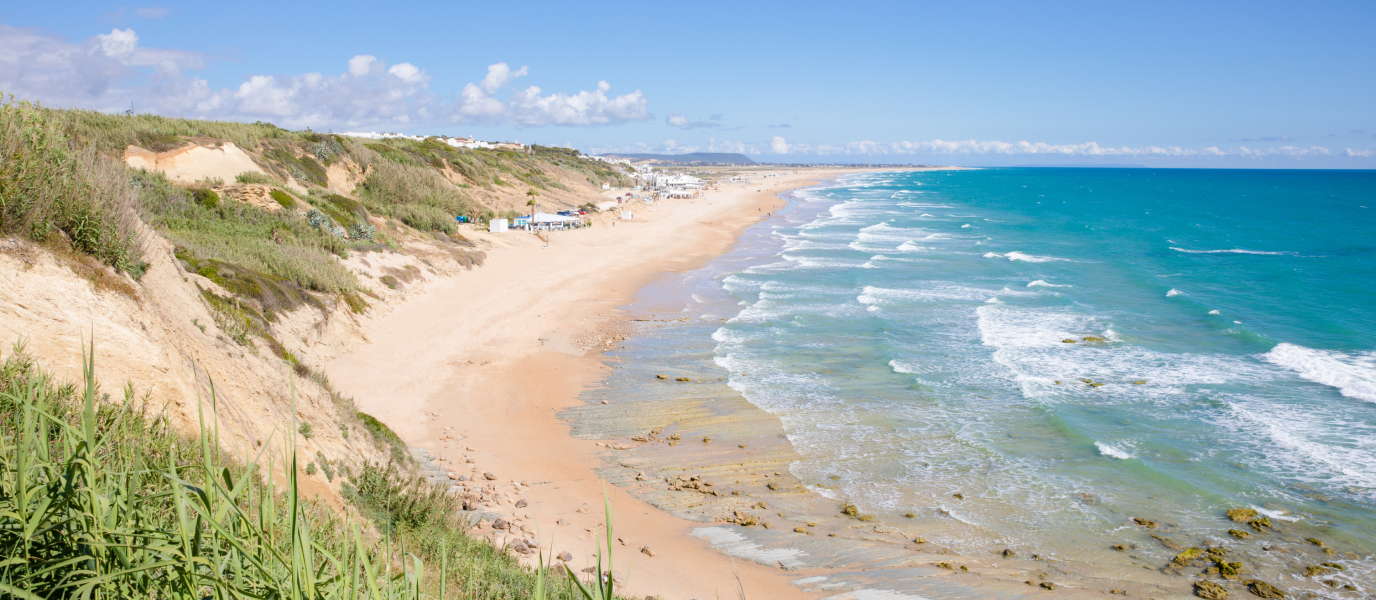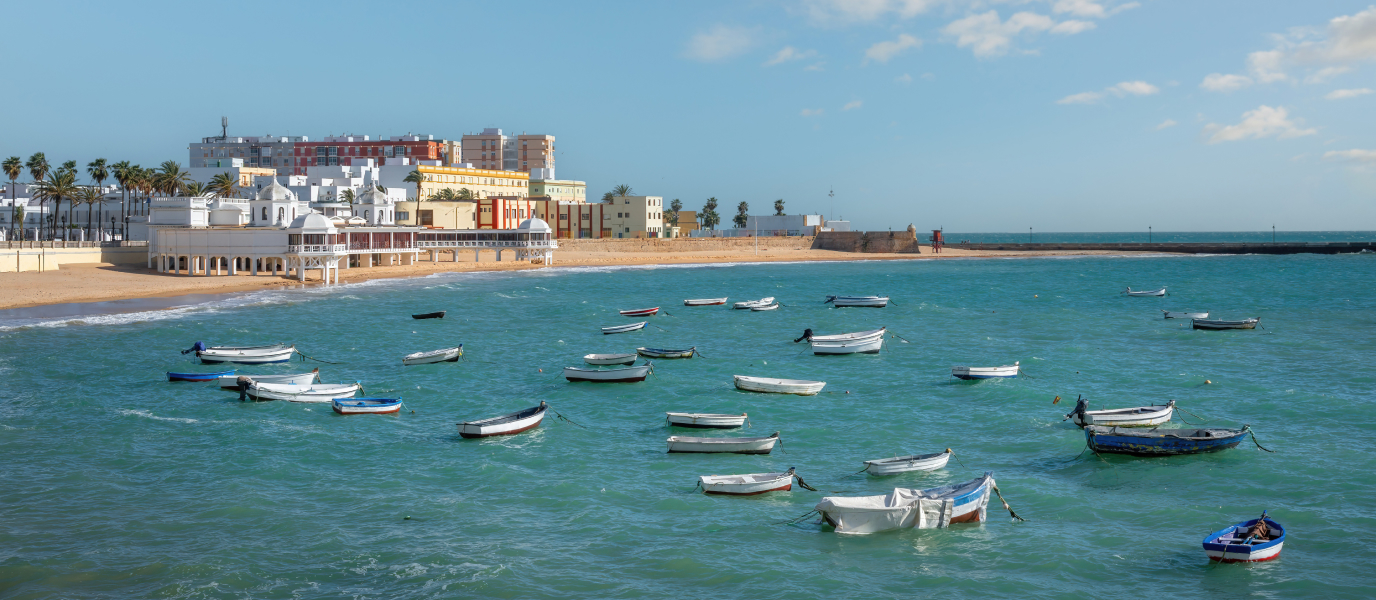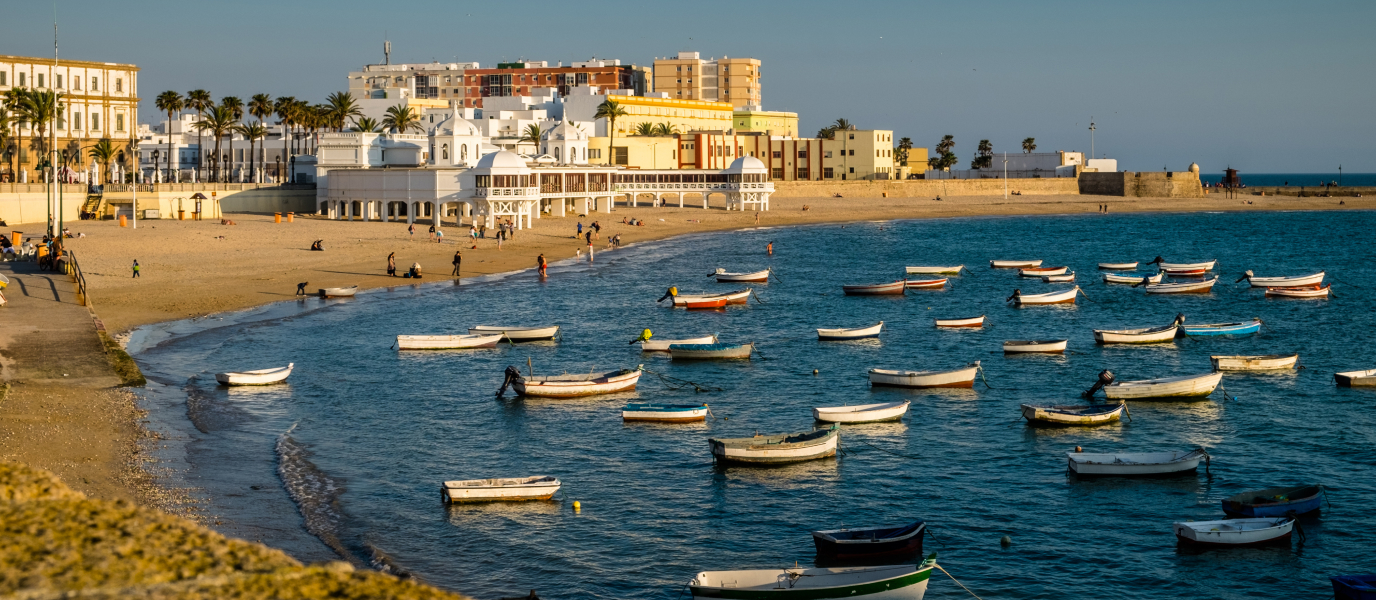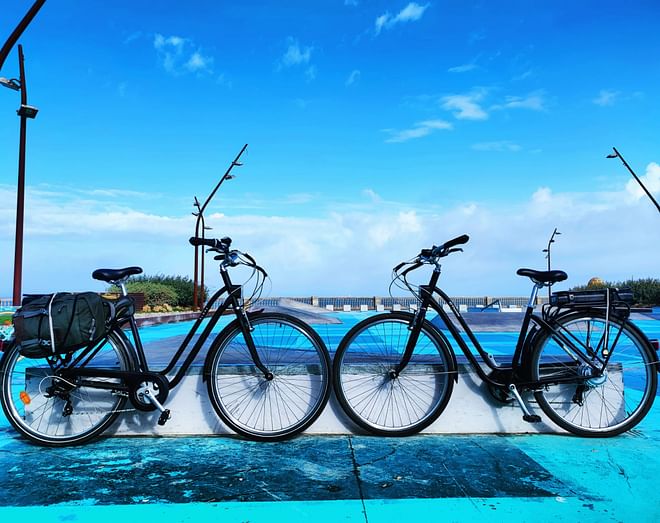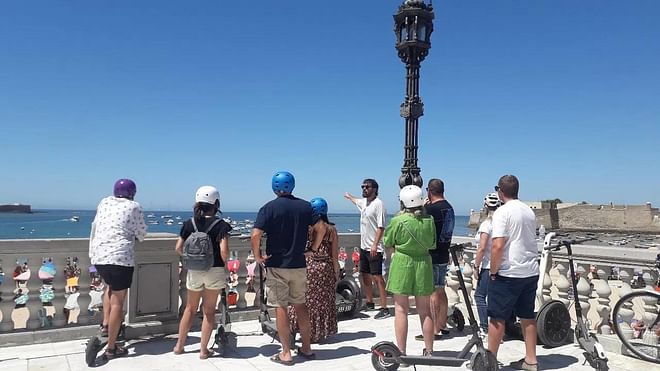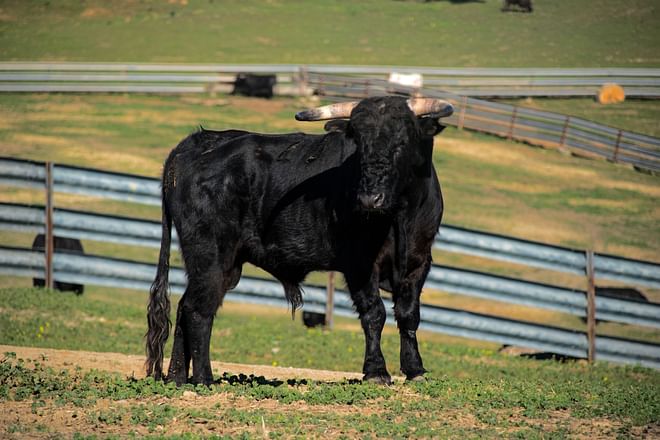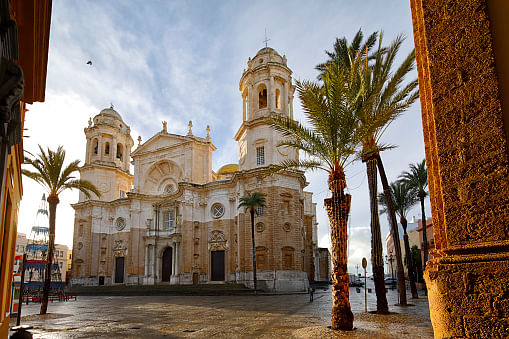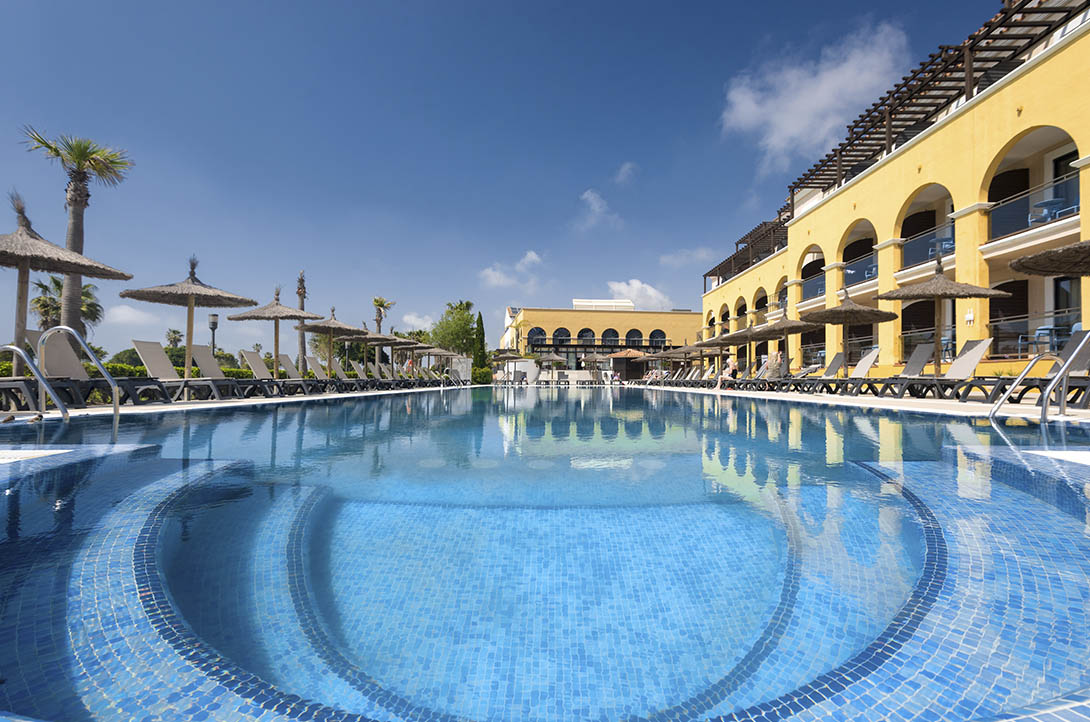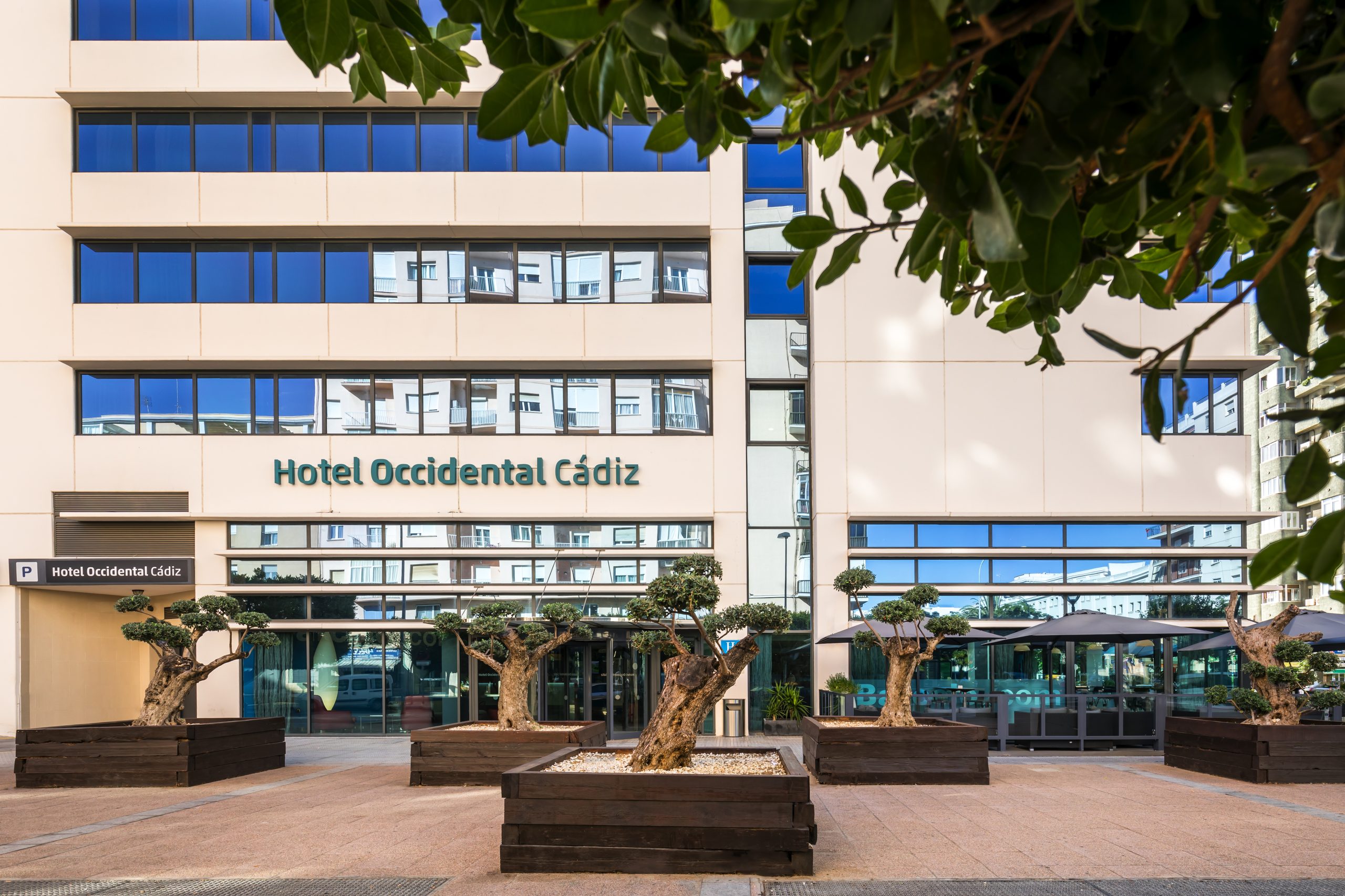Cádiz’s coves are rather like the chocolate you find at the end of an ice-cream cone; the coast of Cádiz has some hidden gems that awaken your senses and make your spirits soar. Idyllic views, the soft touch of the finest sand, the unmistakeable scent of saltpetre and, naturally, the constant sound of waves in the background. This dream-like setting can be found along the whole coastline and it is dotted with tiny, evocative beaches.
The Costa de la Luz consists of a diverse landscape where, at times, nature meets the sea. The scenery of the coastline never fails to impress, with its kilometres of white and golden sand, crystal-clear water and traces of its peoples. Although many Cádiz beaches are conducive to relaxation, its coves are straight out of a storybook and make everyone, to some extent, dream of getting away from it all.
The best coves in Cádiz
You’ll find coves in Conil, Cádiz bay, Barbate and Tarifa, and there are plenty to choose between. Cádiz province has over 260 km of coastline, around 140 km of which have beaches to suit every preference where locals and visitors come to enjoy inlets, sandbanks and coves. There is everything from beaches with a long history, such as Trafalgar beach, which bore silent witness to the legendary battle to beaches from the world of cinema, like La Caleta, where Pierce Brosnan filmed scenes for Die Another Day, an episode of Agent 007 series.
But even those that don’t have such a glamorous past can be proud of being among the best in the province. What about the sight of beaches flooded with colour in Tarifa? Or perhaps you’d prefer an idyllic setting to do water sports, such as Los Lances, Bolonia or Valdevaqueros? You can take your pick from over eighty beaches and dozens of coves too.
Calas de Roche
A great place to start our journey around the best coves in Cádiz is at the cliffs that run along the coastline between Chiclana and Conil. The Calas de Roche are a series of beautiful small inlets surrounded by nature and rocks to the north of Conil. Although these coves tend to get very crowded on sunny weekends and in the summer, the landscape here always has a wealth of attractions for visitors to enjoy.
A network of footpaths from Conil leads to the coves, which are hard to spot from the road that borders the coast. This secrecy is part of their charm, which is only enhanced by their ephemeral nature as they are revealed or entirely submerged depending on the tides. There are no beach bars, toilets or services: the Calas de Roche have remained entirely unspoilt and are perfect for spending a day or two getting back in touch with nature.
Cala Encendida, Cala Áspero, Cala Tío Juan Medina, Cala Pato, Cala Medina and Cala Frailecillo are the half dozen coves that form this stunning area of the Cádiz coastline. The first, Cala Encendida, is perhaps the easiest to access and is also the largest; as a result it tends to be one of the busiest. All of the coves are accessed by stairs that lead down the cliffs and they are also popular with naturists.
Cala del Aceite
Still in Conil, there is another great option: Cala del Aceite. It’s one of the largest coves in this municipality and is also one of the most popular. Located next to the town’s fishing port, the cove is south-facing and sheltered by cliffs making it the perfect spot to visit with children or do water sports like diving. It has a large parking area and a beach bar that opens during the summer months.
Cala de los Alemanes
Our route along the best coves in Cádiz now takes us to Zahara de los Atunes, an independent entity that belongs to Barbate municipality. Despite having fewer than two thousand inhabitants, it’s become a fashionable destination in recent years and that’s primarily due to its beaches. Fine golden sand, calm, transparent water when the easterly wind isn’t blowing… Zahara de los Atunes makes the perfect holiday destination and has everything you could need, including Cala de los Alemanes.
Steps lead visitors down to this slice of paradise where the sunsets are straight off a postcard. But its surprises don’t end there. There are several interesting theories about how it got its name (Alemanes means Germans, in Spanish): some people swear it was named after the German submarine that patrolled the Strait of Gibraltar and often approached the coast during World War II. However, others believe that its name was inspired by the many Germans who moved here after the war, finding in this area the perfect refuge.
Playa Chica, Tarifa
The wind capital of Europe can also boast of having one of the finest coves in Cádiz. Playa Chica in Tarifa is barely half a kilometre long, but that’s more than enough to earn itself a spot among the best coves in Cádiz. Located between Tarifa’s port and the island of Tarifa, it’s one of the busiest coves on the coastline.
Its crystalline waters make it the perfect setting for snorkelling and diving enthusiasts but, without a doubt, kitesurfing is one of the most popular activities here (note: kitesurfing is not permitted during the summer season). One thing to remember is that it’s best to enjoy a dip on Playa Chica when there is a westerly wind, because if the easterly wind is blowing it can be rather uncomfortable.
Cala Arena
The delights of Cádiz’s coves go far beyond the perfect picture of fine sand and long days in the sunshine and Cala Arena is a good example of their wider attractions. This corner of the Cádiz coastline is about ten kilometres from Algeciras and consists of three similar rock and gravel coves surrounded by plant life.
It’s hard to access but that is also one of its main attractions—a day of hiking to reach this spot is definitely worth it, and Cala Arena is one of those places that exude nothing but calm. Ready to track it down?




































































